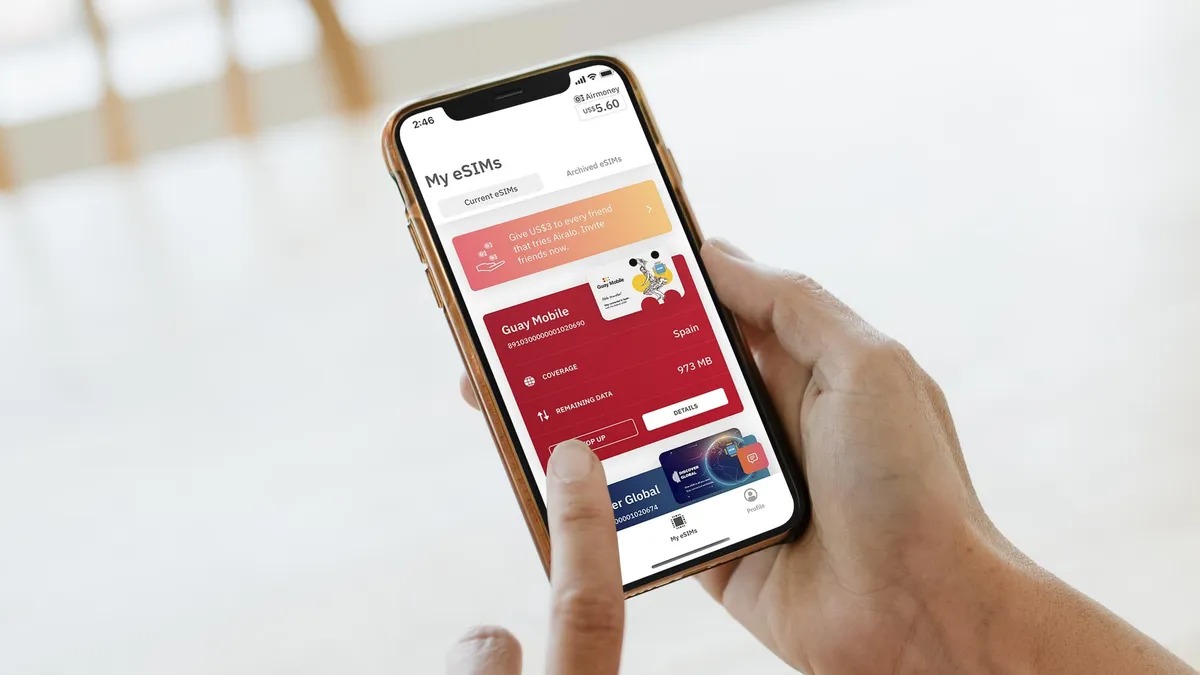With the advent of eSIM technology, staying connected has become more convenient and flexible than ever before. However, one crucial question remains: Are eSIMs cheaper than traditional SIM cards? This article aims to explore the cost-effectiveness of eSIMs compared to traditional SIM cards by examining various factors such as convenience, hidden costs, and overall value. For travelers and tech enthusiasts alike, understanding these differences can help make more informed decisions.
Understanding eSIM Technology
An eSIM, or embedded SIM, is a digital SIM card embedded directly into your device. Unlike traditional SIM cards, which need to be physically inserted into your phone, eSIMs can be activated and managed through software. This technology provides the flexibility to switch between different carriers and plans without needing to change the physical SIM card, offering several advantages.
Benefits of eSIMs
- Convenience: Instant activation and easy switching between carriers.
- Flexibility: Ability to store multiple profiles on one eSIM, making it easy to switch between different numbers or carriers.
- Space Saving: Eliminates the need for a SIM card slot, potentially improving device design and battery life.
- Environmentally Friendly: Reduces plastic waste associated with physical SIM cards.
Comparing Costs: eSIM vs. Traditional SIM
Upfront Costs
One of the primary considerations when comparing eSIMs to traditional SIM cards is the upfront cost. Traditional SIM cards often come with an initial purchase fee, which can vary depending on the provider and country. In contrast, eSIMs are typically free of such charges, as they are already embedded in your device.
Plan Costs
When it comes to plan costs, both eSIM and traditional SIM cards offer a wide range of pricing options. However, there are some distinct differences:
- Local Plans: For local plans, traditional SIM cards may sometimes be cheaper, especially if purchased in bulk or as part of a package deal. However, eSIMs often provide more competitive rates due to the absence of physical card production and distribution costs.
- International Roaming: eSIMs tend to be more cost-effective for international travel. Many eSIM providers, like Simbud, offer flexible international plans that are often cheaper than the roaming charges associated with traditional SIM cards. For travelers, the ability to easily switch to a local carrier’s plan via eSIM can result in significant savings.
- Data-Only Plans: eSIMs often excel in offering affordable data-only plans, which can be particularly beneficial for travelers who rely heavily on data for navigation, communication, and entertainment.
Hidden Costs
Traditional SIM cards can sometimes come with hidden costs that are not immediately apparent. These may include:
- Activation Fees: Some carriers charge an activation fee for traditional SIM cards, which can add to the overall cost.
- Replacement Fees: If you lose or damage your traditional SIM card, there may be a fee to replace it.
- Roaming Charges: Traditional SIM cards often incur high roaming charges when used internationally, whereas eSIMs can switch to a local carrier’s plan, avoiding these fees.
Long-Term Value
When considering the long-term value, eSIMs often provide a better deal. The ability to switch between carriers and plans without incurring additional costs means you can always choose the most cost-effective option for your needs. Moreover, the convenience of not having to physically change SIM cards can save time and hassle, which adds to the overall value.
Case Study: eSIM Usage for Travelers
To illustrate the cost benefits of eSIMs, let’s consider the case of an international traveler. A traditional SIM card may require purchasing a new SIM in each country visited, along with potential activation fees and high roaming charges. In contrast, an eSIM allows the traveler to:
- Activate Local Plans Instantly: Upon arrival in a new country, the traveler can activate a local plan using an eSIM, often at a lower cost than international roaming.
- Avoid Physical SIM Hassles: There’s no need to find a local store to purchase a SIM card or deal with language barriers during activation.
- Manage Multiple Plans: The traveler can store multiple eSIM profiles on their device, making it easy to switch between different countries’ plans without additional cost.
For instance, Simbud offers competitive international plans tailored for travelers, allowing them to compare eSIM options and choose the most cost-effective solution for their journey.
The Verdict: Are eSIMs Cheaper?
While the initial purchase cost of a traditional SIM card might be low, the overall cost-effectiveness of eSIMs becomes evident when considering hidden costs, international usage, and long-term flexibility. eSIMs eliminate the need for multiple physical cards, reduce the risk of roaming charges, and offer a convenient way to switch between plans without additional fees.
Conclusion
In conclusion, eSIMs present a cost-effective solution, particularly for international travelers and those who frequently switch carriers or plans. The convenience, flexibility, and potential savings on roaming charges make eSIMs a compelling choice over traditional SIM cards. For those looking to explore the best eSIM options, Simbud provides a comprehensive platform to compare eSIM plans, ensuring you find the most affordable and suitable plan for your needs. Whether you’re a frequent traveler or simply looking for a more flexible mobile solution, eSIMs are a worthwhile investment in the modern digital age.
Keep an eye for more news & updates on MyStoriesList!
